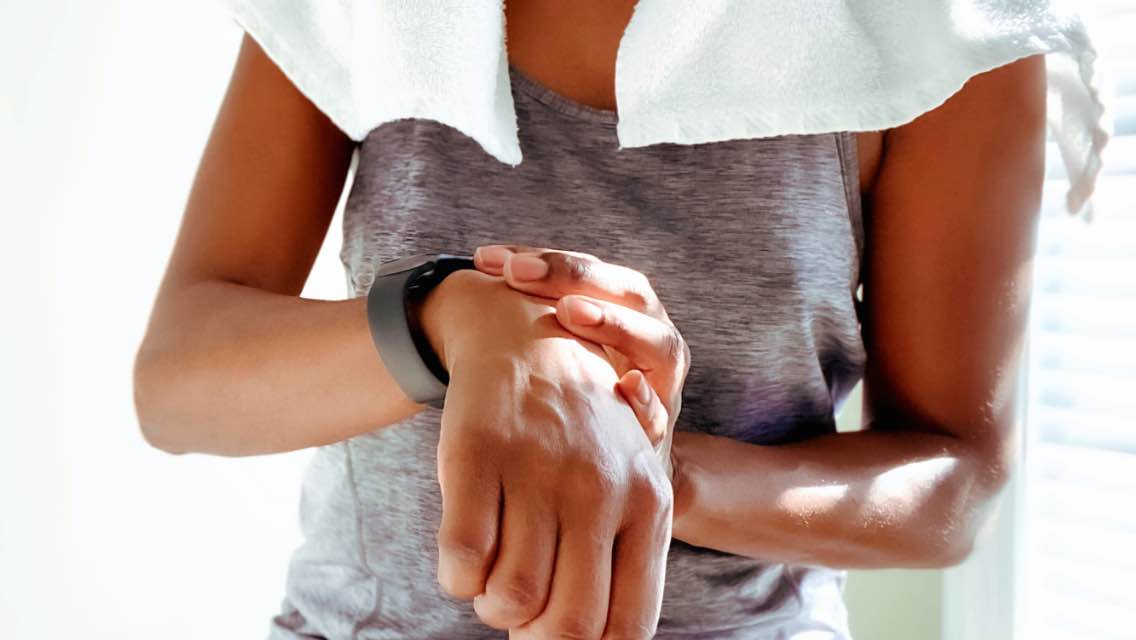Have you ever heard of “the afterburn effect”? Or, the ability to burn calories after a workout? Known as excess post-exercise oxygen consumption, this reaction raises a lot of questions: Does it help you lose weight? Does it mean you can eat more calories? What type of exercise impacts it the most?
Let’s find out.
What is Excess Post-Exercise Oxygen Consumption (EPOC)?
Excess post-exercise oxygen consumption (EPOC) is the measure of calories you burn above your resting metabolic rate following exercise. Though most of your workout calories are burned during your workout, you do burn some calories afterward as well.
Following a training session, you expend extra calories because of increased:
- Blood circulation
- Body temperature
- Catecholamine concentration (catecholamines are naturally occurring amines that function as neurotransmitters and hormones in the body)
- Fat breakdown
- Fat utilization
- Immune system activation
- Lactate metabolism
- Phosphagen replenishment (phosphagen is an energy storage compound)
- Protein synthesis
- Ventilation (a rise in respiratory rate to increase oxygen demands)
The type, intensity, and duration of exercise you do all affect the magnitude of EPOC.
The Impact of Exercise Duration and Intensity
To raise your post-exercise metabolic rate to a meaningful level, you need to exercise at a moderate-to-high intensity for at least 20 to 30 minutes.
EPOC increases linearly with exercise duration, and exponentially with exercise intensity.
That means you can achieve an equal level of EPOC from a shorter, higher-intensity training session as you can from a longer, lower-intensity session.
How do you measure intensity?
Unless you’re a researcher or an Olympic athlete, you don’t need fancy equipment to measure your exercise intensity. You can simply use a subjective measure called Rate of Perceived Exertion (RPE), which is based on a scale of 1 to 10.
A “1” is the intensity of lying on a couch, while a “10” would be like running from a zombie whose riding a bike.
Research shows that RPE is well correlated to percent VO2 max, the standard of exercise intensity in research. Your VO2 max is the max volume of oxygen you can consume at your highest intensity of exercise. Once you know your VO2 max, you can adjust your exercise intensity as a percentage of that level.
An RPE of “6” correlates closely with an intensity of 60 percent VO2 max.
If you don’t know your VO2 max, you can also use a heart-rate monitor and exercise at 60 percent of your max heart rate. Though heart rate and VO2 aren’t perfectly correlated, it’s good enough for most people.
To trigger EPOC, you need to exercise at more than 50 to 60 percent of your max VO2. As your exercise intensity increases beyond 50 to 60 percent max VO2, EPOC increases exponentially.
Since EPOC increases linearly with exercise duration, but exponentially with exercise intensity, you can create a larger EPOC with an intense, short workout than you can with a longer, lower-intensity workout.
EPOC and Endurance or Aerobic Exercise
Following a 30 to 45 minute, moderate-intensity workout, your metabolic rate remains elevated for about 45 minutes, causing you to burn an extra 15 to 20 calories — that’s about the same number of calories you’d burn walking for five minutes at three miles per hour. It’s not even enough calories to offset a one-ounce shot of a Starbucks Caramel Frappuccino.
That doesn’t mean that EPOC has a meaningless impact on metabolism — it just isn’t significant for most people.
To maximize EPOC, you’d need to train at an intensity of 70 to 75 percent of your VO2 max for at least 60 to 80 minutes. At that intensity, your metabolic rate could be elevated for seven to 24 hours. It’s possible at that level that EPOC could generate up to 170 more calories burned over the span of 24 hours following exercise.
Of course, in order to get that extra 170 calories in energy expenditure, you’d need to train longer and harder than most people are willing to do — or would be safe or physically possible for most people to do.
Research shows that, in general, EPOC is about 7 percent of the calorie expenditure of an exercise session. So, if you burn 500 calories during a 60-minute workout, you’ll burn about 35 more calories in the hours following your training session.
EPOC and Interval Training
Interval training involves periods of near-max intensity interspersed with short recovery periods.
As you might expect, EPOC is greater with shorter high-intensity interval training (HIIT) workouts than it is with continuous aerobic exercise. Even though the workout time is shorter, since EPOC increases exponentially with exercise intensity, the short, higher-effort bouts generate more EPOC than longer, moderate-intensity workouts.
For example, one study showed that following four bursts of cycling at 95 percent peak heart rate for four minutes, with three minutes of active recovery between sessions, participants burned an extra 83 calories above normal levels during the three hours after exercise. In total, the workout was only 25 minutes long, but the intensity was more extreme than most people would be willing to endure.
Sprint interval training is similar to HIIT workouts, but the intensity is even greater.
With sprint intervals, you go all out for 20 to 60 seconds, then rest for two to four minutes between sets. This form of exercise offers the greatest EPOC, but at the cost of an extreme intensity.
EPOC and Weight Training
It’s much easier to monitor calorie expenditure during cardio or aerobic exercise than it is to measure it during strength training. As a result, most calorie-related exercise research relates to endurance training or aerobic exercise.
Yet, strength training is arguably the more important form of exercise of the two. Muscle mass as you age plays a significant role in your quality of life.
Interestingly, hypertrophy-style training — strength training designed to increase muscle and bone mass — has the most significant impact on EPOC. The effects may also be longer lasting.
One study showed that an eccentric-style hypertrophy session increased metabolic rate by 9 percent for 72 hours. That’s about 550 extra calories burned from the training session.
Eccentric training produces more muscle damage and delayed onset muscle soreness than regular strength training, so it’s not usually used in programs for novice exercisers.
Fat Loss
Fat loss is more than a calorie balance equation. So, even though EPOC can increase your daily calorie expenditure slightly, it alone isn’t enough to change your body composition.
It may, however, enhance the results of a fat-loss program that involves a good, high-protein diet and strength training.
Does EPOC Matter?
EPOC is just one piece of a big fitness puzzle.
For a high-performing athlete, EPOC is encouraged to be a factor in nutrition planning, as it does increase caloric needs.
For those on a weight-loss program, higher levels of EPOC may enhance fat loss, but introducing high-intensity interval training should not interfere with the other goals of your training plan.
That said, training to maximize EPOC is not always appropriate. For example, we would not recommend high-intensity training for those with adrenal or chronic fatigue. It could also compromise your recovery from other types of training.
In the end, the best part of understanding EPOC is that it reinforces the fact that your body has to work hard during the recovery process following your training sessions.
Hopefully that understanding reinforces the need to eat a higher-protein diet, get sufficient sleep, and take your Foundational Five, which are all needed to recover from one session so you can attack the next one.
References


